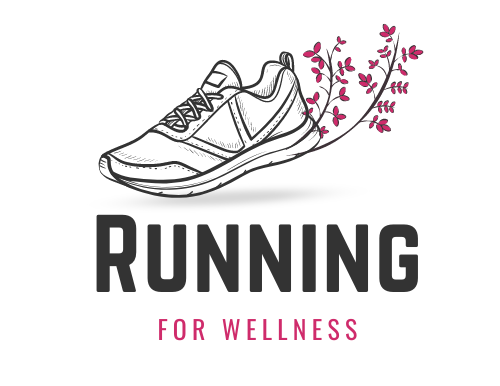Runners often fall into habits that seem beneficial but ultimately hold them back.
Coaches at every level work to correct these misconceptions and instill better practices.
With that in mind, here are seven behaviors that coaches consistently urge runners to drop immediately.
Table of Contents
Toggle1. Stop Comparing Your Pace to Others

Pace depends on far more than a number on a watch. It’s shaped by terrain, elevation, weather, sleep, hydration, and where someone is in their training cycle.
Using another person’s pace as a measuring stick rarely tells the full story and often results in misguided expectations.
Coaches stress the importance of staying grounded in personal context rather than chasing someone else’s metrics.
What begins as a spark of inspiration often turns into a relentless loop of doubt.
Constantly scanning social media or race results can quickly shift your mindset from empowerment to insecurity. That shift pulls attention away from what actually fosters improvement:
- Effort
- Consistency
- Listening to your own body
Coaches often redirect athletes toward internal cues and individualized metrics.
To better evaluate effort and track real progress, many coaches suggest using more sustainable and personal performance markers such as:
- Heart rate zones that align with aerobic and anaerobic thresholds
- Rate of perceived exertion (RPE) based on how hard a run feels, not how fast it looks
- Time spent on feet or total weekly mileage relative to goals and recovery
- Progress in workouts rather than social comparisons or leaderboard placements
Growth doesn’t happen in someone else’s shoes. A seven-minute mile for one person may require a completely different physiological load than it does for another.
2. Stop Skipping Strength and Plyometric Training
Mileage without muscle creates imbalance. Logging endless runs without integrating cross-training, strength and plyometric sessions weakens the entire foundation of performance.
They are central to long-term success, injury prevention, and efficient movement.
Runners who neglect them often find themselves plateauing, breaking down, or dealing with recurring aches that never quite go away.
Concentric and eccentric loading build muscular resilience in ways traditional running cannot.
Eccentric work, in particular, teaches the body how to absorb shock and stabilize joints during footstrike, while concentric work powers every toe-off with more force. Both contribute to overall control and speed.
Coaches also highlight the importance of triggering the Stretch-Shortening Cycle (SSC), which improves the body’s ability to store and release energy rapidly, crucial for sprinting, hill work, and powerful strides.
Skipping this type of training leads to longer ground contact times and wasted energy. Poor SSC engagement results in inefficiency, slower turnover, and increased wear on tendons and ligaments.
To make implementation easier, coaches recommend focusing on key movements. Here’s a bullet point list of essentials:
- Squats (bodyweight, goblet, or barbell): Strengthens quads, glutes, and core.
- Lunges (walking or stationary): Builds stability and targets multiple muscle groups.
- Deadlifts (Romanian or trap bar): Reinforces posterior chain and hip power.
- Calf raises (single-leg preferred): Boosts ankle strength and rebound capacity.
- Bounding drills and skips: Enhances reactive strength and running coordination.
- Box jumps and depth jumps: Trains explosiveness and SSC efficiency.
Consistent strength and plyometric work also improves running economy, meaning runners use less energy at the same pace.
3. Stop Ignoring Recovery and Injury Prevention

Hard work pays off only when paired with smart recovery. Pushing through fatigue, doubling up sessions without rest, and skipping cooldowns create a ticking time bomb.
Recovery isn’t wasted time, it’s where all adaptations from training actually take root. Muscles repair, the nervous system recalibrates, and energy systems replenish.
Coaches see a clear pattern: athletes who cut corners on recovery often plateau or regress. Short-term grind leads to long-term setbacks.
Fatigue and breakdown don’t happen overnight. They creep in silently until a strained calf or chronic tendonitis forces an unwanted break.
Coaches recommend focusing on these essentials:
- Aim for 7–9 hours of quality rest each night
- Incorporate down weeks and recovery blocks strategically
- Prioritize protein, carbs, and anti-inflammatory foods post-run
- Foam rolling, dynamic stretching, and activation drills
- Full rest or active recovery to let the body recharge
- Pay attention to persistent soreness, declining performance, or emotional burnout
Athletes who prioritize these elements find themselves able to train harder, longer, and more consistently. Fewer interruptions equal better progression.
Whether it’s muscle relief or post-run relaxation, many runners explore THC and CBD products for their potential recovery benefits.
If you’re located in North Las Vegas, Euphoria Wellness offers a convenient way to receive high-quality cannabis products directly to your doorstep, ideal for those who prioritize both performance and well-being.
4. Stop Obsessing Over Gear and Social Media Trends

No watch or shoe ever replaced discipline. Coaches stress this point repeatedly. Chasing the newest shoe drop or obsessing over influencer gear lists does more harm than good.
Trends shift quickly, but proper training principles remain constant. Too many runners fall into the trap of believing the right gadget or outfit will suddenly transform performance.
Scrolling through reels filled with shiny apparel and sponsored athletes often creates pressure to “keep up” rather than focus on self-improvement.
Coaches observe runners constantly tweaking gear setups instead of sticking to proven routines.
Swapping training plans based on trending hashtags introduces inconsistency that derails long-term growth.
Upgrades won’t outpace poor habits. A carbon-plated shoe can’t correct collapsed arches or weak glutes. Fancy socks don’t fix overstriding. Gear addiction becomes a distraction when it starts replacing the essentials of proper training.
Here’s what most coaches wish runners would prioritize instead of the latest GPS gadget:
- Consistent training schedule
- Sleep quality and duration
- Balanced nutrition to support mileage
- Mobility and strength work
- Recovery strategies like rest days, hydration, and foam rolling
Investing in effort, not excess, builds better results. No piece of apparel brings improvement on its own. Confidence and capability come through action, not accumulation.
5. Stop Training Without a Plan (Or Following Generic Plans)

Winging it rarely leads to progress. Heading out for a run without a clear purpose, or worse, following a one-size-fits-all online template, creates inconsistency and raises the risk of injury.
Copy-pasting someone else’s schedule may look productive on paper, but it completely ignores your personal context.
Work hours, stress levels, sleep patterns, nutrition habits, injury history, and life responsibilities all affect how much training your body can absorb and adapt to.
Coaches don’t guess. They assess. Structured plans developed by professionals take your entire situation into account. They apply progression carefully, ensuring each workout has a role within a bigger picture.
You don’t get that level of precision with a generic plan downloaded from a website or found in a running forum.
A personalized approach reduces the likelihood of plateaus and overtraining. It also protects against the common trap of doing too much, too soon.
One runner may thrive on five days of running, another may break down after three. Only a tailored plan can respond to these nuances.
Here’s what an effective, individualized training plan typically includes:
- Current fitness, running history, injury record
- Racing distance, time goals, or consistency targets
- Appropriate mix of speed work, easy runs, long runs, rest
- Adjustments for travel, illness, or fatigue
- Strategic buildup phases, recovery weeks, and peak timing
- Scheduled non-running sessions to support performance
- Feedback loops to identify when things go off track
6. Stop Measuring Success Solely by Race Times
A stopwatch shouldn’t dictate a runner’s worth. Personal records are gratifying, but tying all value to finish times creates a cycle of dissatisfaction.
One missed goal, and motivation crumbles. Chasing numbers turns running into a chore instead of a source of enjoyment.
Coaches recognize success in many forms. Improvement shows up in the ability to run more consistently, in stronger form, in fewer injuries, and in greater day-to-day enjoyment.
Real progress often hides in the spaces between races.
Success metrics coaches urge runners to track include:
- Training consistency over time
- Injury-free weeks and improved recovery
- Running form and efficiency gains
- Enjoyment levels and motivation to train
- Mental toughness during workouts, not just races
Races represent snapshots, not the full picture. One off day doesn’t erase months of meaningful development.
Running is a long game, and satisfaction should come from sustained effort, not fleeting results.
7. Stop Thinking Coaching is Only for Elites

Coaching isn’t an elite privilege. Every day, runners stand to benefit just as much, if not more, than professionals who already have years of structure behind them.
Most amateur runners juggle work, family, and limited time, which makes efficient, customized training even more valuable.
One-on-one guidance can transform guesswork into progress. Coaches adapt training to life’s realities, prevent burnout, and push when needed.
Personalized support ensures runners build toward goals in a sustainable way.
Coaching provides several benefits that reach far beyond workouts:
- Knowing someone is tracking progress fuels consistency
- Clear benchmarks broken into manageable steps
- Adjustments based on real-time data and feelings
- Smarter loads, balanced workouts, and strength integration
- External support helps maintain momentum during slumps
Running with guidance becomes more effective, enjoyable, and sustainable.
Working with one often makes the difference between stagnation and breakthrough.
Summary
Shifting these seven behaviors creates space for healthier, smarter, and more enjoyable running. Coaching is about optimization.
Let go of counterproductive habits, embrace better ones, and experience a level of consistency and fulfillment that lasts.
Related Posts:
- How Can You Start a Career as a Running Coach?
- How Long Does It Take to Train for a Half Marathon?
- 10 Best Running Documentaries - Inspiring Films for Runners
- How Far Is a Half Marathon? Everything You Need to Know
- Lower Back Pain While Running? Here's What You Need to Know
- 25 Simple Running Motivation Tips To Get You Moving







